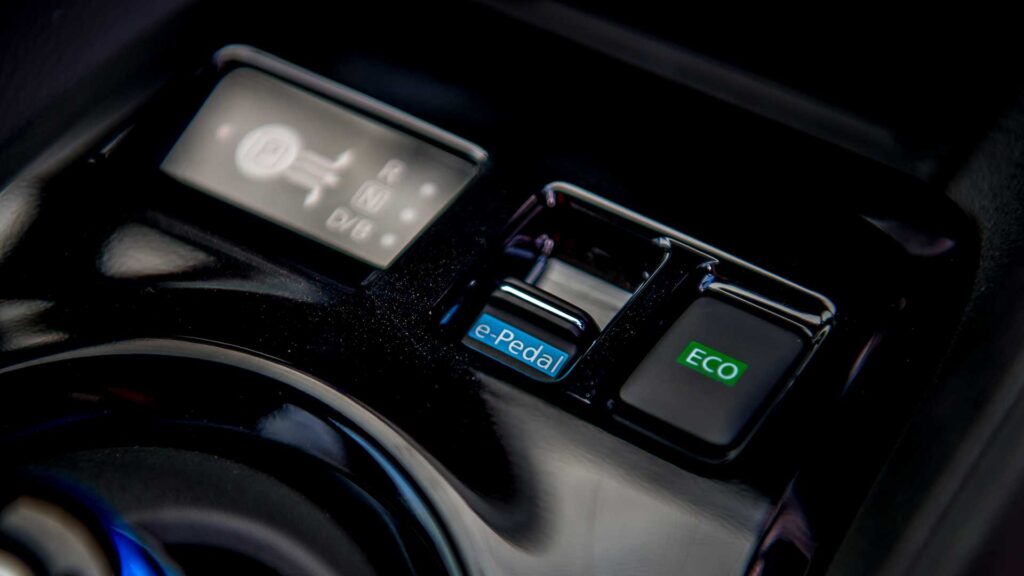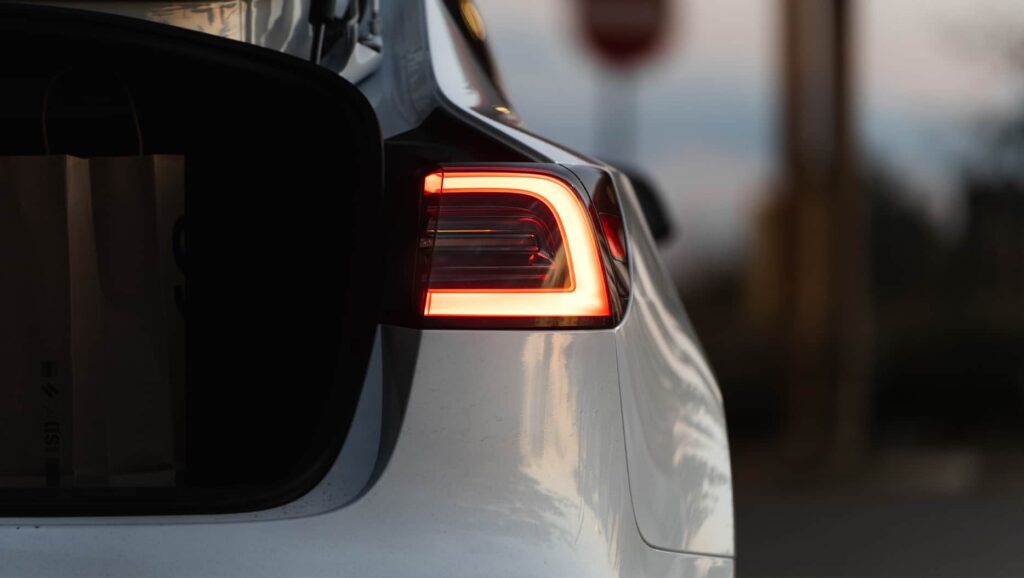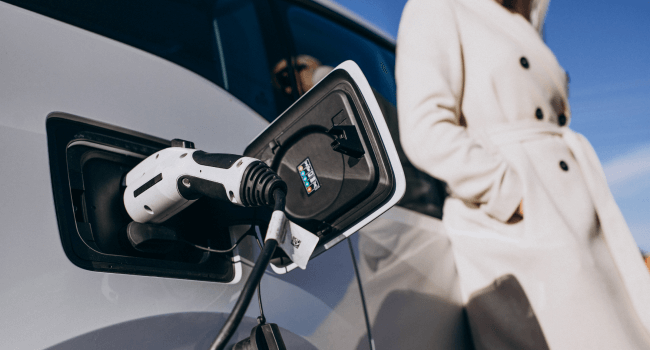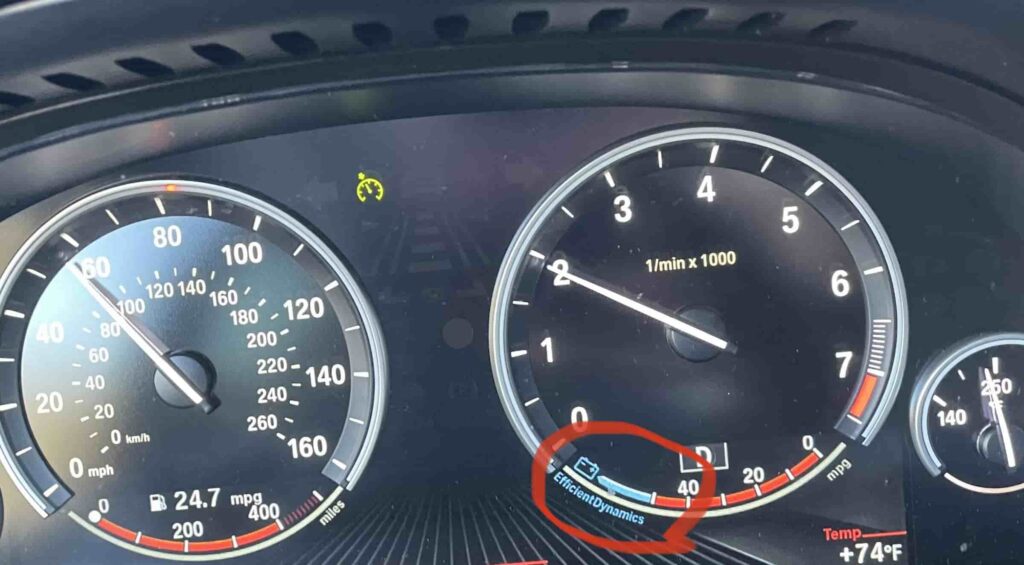When you press the brake pedal, regenerative braking helps charge the battery by turning moving energy into electricity. This smart technology makes your vehicle more efficient, helps the battery last longer, and lowers repair costs.
In this article, we’ll explore how pressing the brake pedal charges your car’s battery through regenerative braking. We’ll discuss its benefits, how it works, and why it’s important for making driving more efficient and eco-friendly.
Understanding Regenerative Braking:
Regenerative braking is a technology used in electric and hybrid vehicles that allows them to recover energy during braking. Instead of wasting the car’s kinetic energy as heat (like traditional brakes), regenerative braking converts it back into electrical energy.

Here’s how it works:
- Energy Recovery: When you press the brake pedal, the vehicle’s electric motor switches roles and acts as a generator. It captures the energy usually lost when slowing down.
- Battery Recharge: The captured energy is then sent back to the battery, helping to recharge it. This process can extend the vehicle’s driving range.
- Smooth Deceleration: Regenerative braking provides a gentle, smooth stop, improving the driving experience and reducing wear on the brake system.
Benefits of Regenerative Braking
Increased Efficiency:
Regenerative braking is a method that recycles the energy that would otherwise be lost while braking. This process significantly improves overall vehicle efficiency, allowing for longer driving ranges and less frequent charging.
Extended Battery Life:
By capturing and reusing energy during braking, regenerative braking helps maintain optimal charge levels in the battery. This reduces strain on the battery, extending its life and improving performance.
Reduced Wear on Brakes:
Since regenerative braking relies less on traditional friction brakes, it results in minimal wear on brake pads and discs. This reduces maintenance costs and increases the life of braking components.
Smoother Driving Experience:
Regenerative braking provides a gradual deceleration, which enhances comfort for passengers. This smooth transition when slowing down makes for a more enjoyable and relaxed driving experience.
Environmental Benefits:
By reducing the energy drawn from the battery and lowering emissions, regenerative braking contributes to a cleaner environment. It supports sustainable driving practices, making it an essential feature for eco-conscious drivers.
How Regenerative Braking Works?
Regenerative braking uses an electric motor to slow down the vehicle. When you press the brake pedal, the motor switches to generator mode, capturing the car’s motion energy.

This energy is converted to electricity and returned to the battery for storage. Instead of wasting energy as heat, regenerative braking recycles it, helping to recharge the battery while providing smooth and efficient stopping power.
Read Also: How Long to Run Car After Dead Battery – Guide In 2024!
Benefits of Regenerative Braking for Battery Life:
Regenerative braking helps extend battery life by reducing the energy drawn from the battery during driving. By capturing energy when braking, it keeps the battery charged without overworking it.
This consistent recharging minimizes stress on the battery, leading to better performance and a longer lifespan. As a result, drivers can enjoy more trips without needing frequent recharges, making the vehicle more efficient and reliable overall.
Comparing Regenerative and Traditional Braking Systems
Energy Recovery:
Regenerative braking captures kinetic energy during braking and converts it into electricity, which is then used to recharge the battery. In contrast, traditional braking systems waste this energy as heat, resulting in no recovery.
Wear and Tear:
With regenerative braking, there is significantly less wear on brake pads and discs, leading to lower maintenance costs over time. Traditional braking systems, however, experience considerable wear on components, requiring more frequent replacements and repairs.
Efficiency:
Regenerative braking enhances overall vehicle efficiency by allowing longer driving ranges. Traditional braking systems are less efficient, relying entirely on energy from the battery or fuel without recovering any energy.
Driving Experience:
Regenerative braking provides a smooth and gradual deceleration, making the driving experience more comfortable for passengers. On the other hand, traditional braking can result in abrupt stops, which may be less pleasant.
Environmental Impact:
Regenerative braking contributes to reduced emissions by maximizing energy use and minimizing waste. In contrast, traditional braking has a higher environmental impact due to wasted energy and increased fuel consumption.
Factors Affecting Regenerative Braking Efficiency
Several factors influence the efficiency of regenerative braking. Vehicle speed plays a crucial role; it works best at higher speeds where more energy can be captured. The battery’s state of charge is also important; if the battery is full, energy recovery is limited.
Furthermore, driving factors, such as terrain and weather, can affect performance. Finally, smooth driving habits, such as gentle braking, enhance energy recovery compared to sudden stops.
Popular Vehicles with Regenerative Braking
Many electric and hybrid vehicles feature regenerative braking. Notable examples include the Tesla Model 3, known for its efficient energy recovery, and the Toyota Prius, a pioneer in hybrid technology.

The Chevrolet Bolt EV offers customizable settings for regenerative braking, while the Nissan Leaf features a strong system for recharging. These vehicles highlight how regenerative braking enhances efficiency and helps drivers go further on a single charge.
Does Pumping Brakes Charge the Battery?
Pumping the brakes does not charge the battery. Regenerative braking works when you press the brake pedal firmly, allowing the system to capture energy.
When you pump the brakes, it disrupts this process and may not maximize energy recovery.
For effective charging, it’s best to apply the brakes smoothly and steadily, letting the regenerative system efficiently convert the vehicle’s motion energy back into electricity for the battery.
Read Also: How To Dispose Of Car Batteries – A Complete Guide In 2024!
What Does It Mean When RAV4 Says Battery Charging?
When your Toyota RAV4 shows “battery charging,” it means the regenerative braking system is working. This message indicates that the vehicle is converting energy from braking into electricity, which is then sent back to recharge the battery.
It’s a positive sign that the system is functioning properly, helping improve efficiency and extend the driving range. This feature helps you use energy wisely while driving.
Why Does My Car Keep Saying Battery Charging?
If your car frequently displays “battery charging,” it usually means the regenerative braking system is engaging often. This can happen if you’re driving in stop-and-go traffic or going downhill, where braking is needed more.

However, if the message appears too often or unexpectedly, it might be a sign of an issue. In that case, it’s a good idea to have your vehicle checked to ensure everything is working correctly.
Frequently Asked Questions:
1. Can all vehicles utilize regenerative braking?
No, regenerative braking is primarily found in electric and hybrid vehicles. Traditional gasoline vehicles do not have this feature.
2. How much energy can be recovered through regenerative braking?
The amount of energy recovered varies by vehicle model and driving conditions but can typically range from 10% to 30% of the energy used during acceleration.
3. Is regenerative braking the same as engine braking?
No, regenerative braking uses the electric motor to recover energy, while engine braking uses the engine’s compression to slow the vehicle.
4. How do I know if my regenerative braking system is working?
You can monitor the battery charge level and pay attention to how your vehicle decelerates. If you notice a significant lack of resistance when slowing down, it may indicate a problem.
Conclusion:
Regenerative braking is a smart technology that charges your car’s battery while slowing down. It improves efficiency, extends battery life, and reduces wear on brakes.
Capturing energy during braking makes driving smoother and more eco-friendly, helping you go further between charges. It’s a win for drivers and the environment.





